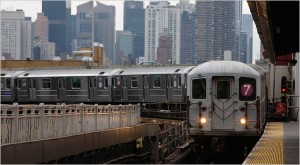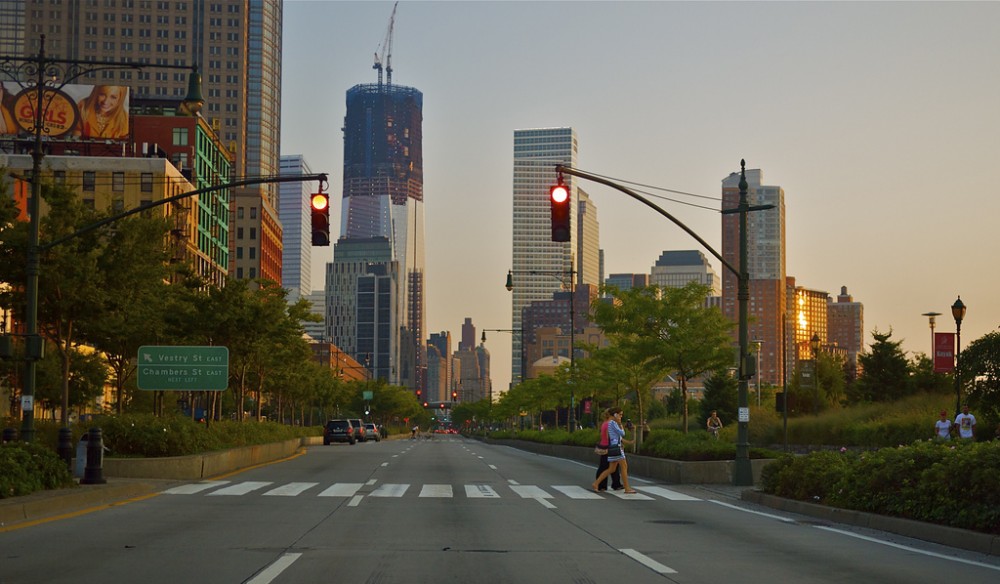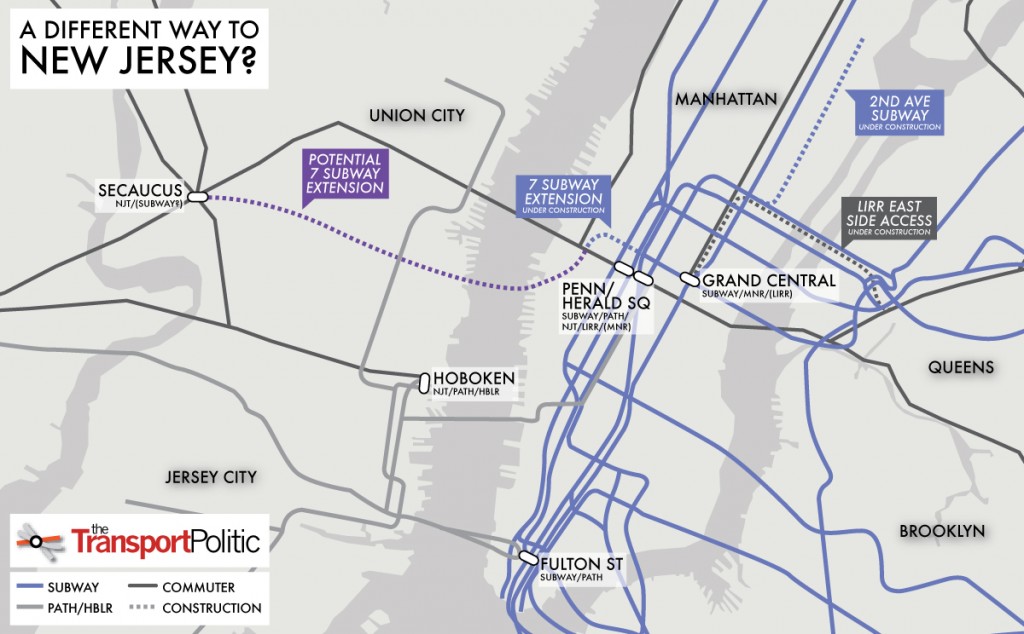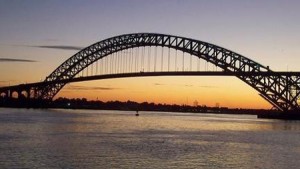I have written a comprehensive report for my Sustainable Transportation course at Lafayette College that answers the question on why we have not built a new crossing linking Manhattan and New Jersey. This was a project assigned to our class addressing transportation issues in the United States. Being from New York City, I chose this topic because I wanted to know why I have to wait in traffic for up to an hour on the approaches to any of the existing crossings. What I have discovered and written explains the social, political and economic attitudes that stagnated the highway growth in the New York Metro Area after the expansion of the George Washington Bridge. It will also give insight on the future of crossing the Hudson River. The PowerPoint associated with it will be posted soon.
Category Archives: Crossing
New Hudson River Crossing in New York City? Part II
 Many proposals in the last half decade have been dreamed and/or stopped dead in its tracks to construct a new Hudson River crossing connecting Manhattan and New Jersey. One of them is the ARC Tunnel which was cancelled by New Jersey Governor Chris Christie in 2010 because of its spiraling out of control costs. Subsequently, Mayor Bloomberg of New York City silently instructed municipal staff to begin studying the possibility of stretching the city’s subway system into the state across the Hudson River.
Many proposals in the last half decade have been dreamed and/or stopped dead in its tracks to construct a new Hudson River crossing connecting Manhattan and New Jersey. One of them is the ARC Tunnel which was cancelled by New Jersey Governor Chris Christie in 2010 because of its spiraling out of control costs. Subsequently, Mayor Bloomberg of New York City silently instructed municipal staff to begin studying the possibility of stretching the city’s subway system into the state across the Hudson River.
The 7 Train was the prime candidate in this proposal. It would be extended about four miles westward to Secaucus Junction where a major hub for NJ Transit trains already exists. With an estimated cost of $5.3 billion, this is almost half the cost of the cancelled ARC Tunnel proposal of $11 billion. The explanation for this is that there are already existing tunnels that the 7 Line runs through in Manhattan that this new Hudson River tunnel would connect to; the ARC Tunnel did not have this advantage as major tunneling would have to be done underneath the streets of Manhattan.
The conception of this new plan is unique because it would be the first subway to go outside New York City’s borders. It would connect New Jersians to Times Square, and Grand Central Terminal, both major train hubs. This plan is brilliant because it costs half as much and would relieve congestion on existing Amtrak, NJ Transit and PATH trains. It would provide more capacity and spur development of areas in Manhattan and New Jersey it runs through.
Extending the 7 Line across the Hudson River to New Jersey should be high priority for the two states. It is widely known that we need to build additional crossings from Manhattan to New Jersey and when there is something available at a bargain compared to other proposals, we should take it.
Source: http://www.thetransportpolitic.com/2010/11/17/to-replace-the-arc-tunnel-a-subway-extension-to-new-jersey/
Source: http://www.nytimes.com/2010/11/17/nyregion/17tunnel.html?_r=1&hp
Bayonne Bridge Reconstruction
The Bayonne Bridge is the fourth-longest steel arch bridge in the world, and was the longest in the world at the time of its completion. It connects Bayonne, New Jersey with Staten Island, New York, spanning the Kill Van Kull which is a very active route for cargo ships to ports in New Jersey. Its clearance is 151 ft, but that is no longer large enough for the new cargo ships that have increased there size and height to almost 200 ft.
In order to tackle this problem the Port Authority of New York & New Jersey (PANYNJ) has approved plans to raise the elevation of the bridge to 215 ft without tearing down the bridge. It is a national Historic Civil Engineering Landmark, so the Port Authority did not have much of a choice. It is quite fascinating in the video on how they would complete such an endeavor.
Not only will the bridge be raised to secure continued shipping operations, but additional benefits for the public would also be created. The existing bridge has a 6 ft walkway, 10 ft wide travel lanes (two in each direction), with neither shoulders nor a median divider. After the project is completed there will be 12 ft wide travel lanes, 6.5 ft right-hand shoulders, and a median divider for improved safety and to extend the life of the bridge. Furthermore, a new toll gantry will be installed, allowing for quicker travel over the bridge and there will be a 12 ft wide bikeway/walkway for the entire length of the bridge with access ramps replacing existing stairs.


